How to choose a kitchen countertop?

There is no modern kitchen without a countertop. Daily cooking activities require free surfaces, which have a number of requirements. Housewives should be comfortable working with food and easy to clean. In addition, coatings should be pleasing to the eye, be practical, combined with kitchen furniture and have an acceptable cost.
Classification
The kitchen countertop is a flat horizontal surface intended for cooking. Countertops are either monolithic or prefabricated. Standard types are sold ready-made, and non-standard types are made to order. Kitchen surfaces differ in several ways.

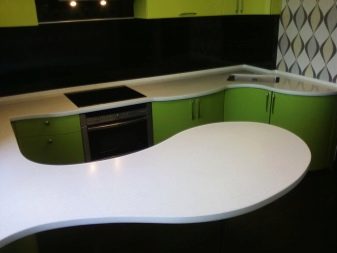
Types of materials
The most accessible material from which countertops are made are boards pressed from shavings (chipboard) or from wood fibers (MDF). The former is undesirable to install due to the presence of binding elements used for gluing the chips. During operation, low-quality slabs emit harmful substances. The latter are of higher quality, and most importantly, they are safe for humans and pets. They all have the following disadvantages:
- susceptibility to deformation when moisture penetrates into the ends of the plates;
- low resistance to loads;
- the impossibility of repair when opening and the accompanying deformation of the canvases.
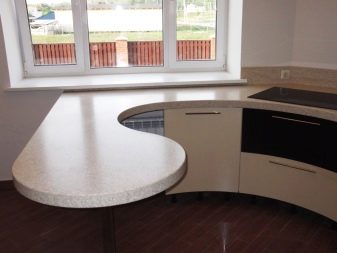

Countertops made of natural wood meet the requirements for safety and impeccable appearance. As a rule, for wet rooms, which include kitchens, hardwoods are used - oak, teak, beech. The cost of such products is quite high, but the service life is also decent. A low cost coating is made of softer wood - pine, ash, walnut. The tree is impregnated with a special composition, the outside is covered with several layers of varnish. To preserve the external beauty, housewives will have to work with caution. The varnish will not withstand abrasive cleaning agents, it will deteriorate with cuts, and will wear off over time during normal use of the working surface.
A "bare" tree under the influence of moisture begins to warp.
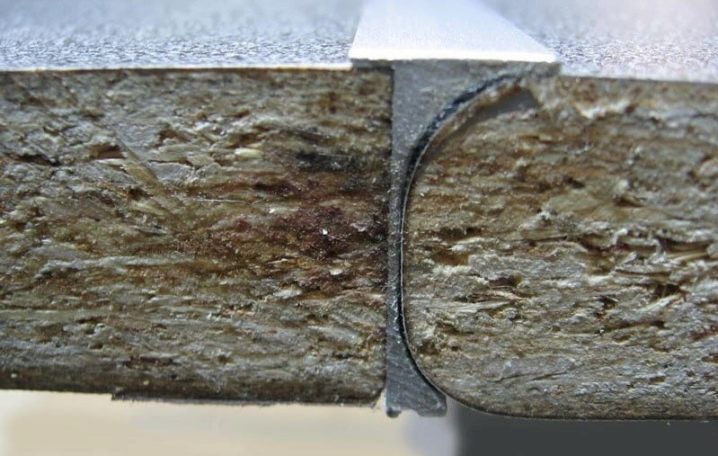
Acrylic is an artificial material that belongs to the middle price category., which not least makes it in demand. The strength of acrylic surfaces is comparable to natural stone. If a scratch does appear on the surface, it is easy to sand it due to the inherent viscosity of acrylic. In addition, this feature prevents chipping on the worktop. You can make a surface of any shape from acrylic, since its individual parts are easily glued together. From the strength of the material itself, the strength of the seam reaches 83%. The main advantage of the material is the minimum porosity and, as a result, the same water absorption - only 34 thousandths of a percent.
If the tabletop is made of acrylic, the following points are contraindicated for it:
- temperatures exceeding +150 degrees;
- aggressive detergents containing concentrated acids and acetone;
- metal brushes and sponges with an abrasive layer.
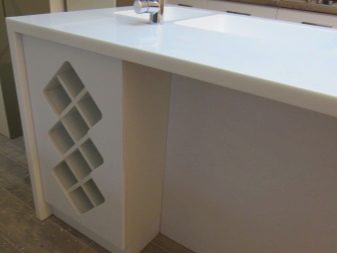
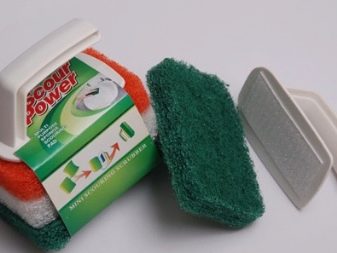
Not the last place is occupied by stainless steel coatings. Steel countertops fit into any environment, as the finish can be either glossy or matte. But it is more practical to choose corrugated sheets, since dirt is not as visible on them as on a flat surface.The advantage of the metal is environmental safety, resistance to burnout, corrosion, high temperature. However, thin sheets can deform with point impacts and abrasive cleaners can leave noticeable scratches. These countertops require frequent maintenance.
The most durable kitchen countertops are made from granite, the top material used for countertops.
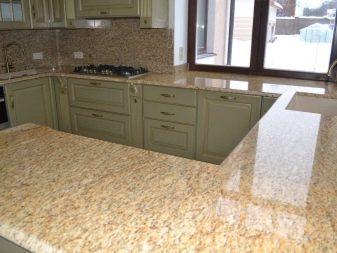
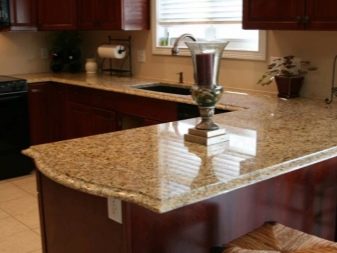
A massive stone can be installed on equally massive supports. Fragile furniture cannot withstand the weight of the "eternal" stone. The service life of granite significantly exceeds the duration of use of the structures on which it is installed. He has a lot of positive qualities, but a high cost. Chances are high that the kitchen hostess will get bored with the coating, not having time to "grow old".
Important! Kitchen glass is rarely used. It looks great, but not as practical as other materials. It must be constantly wiped clean, otherwise the smallest dirt, drops and fingerprints become visible.
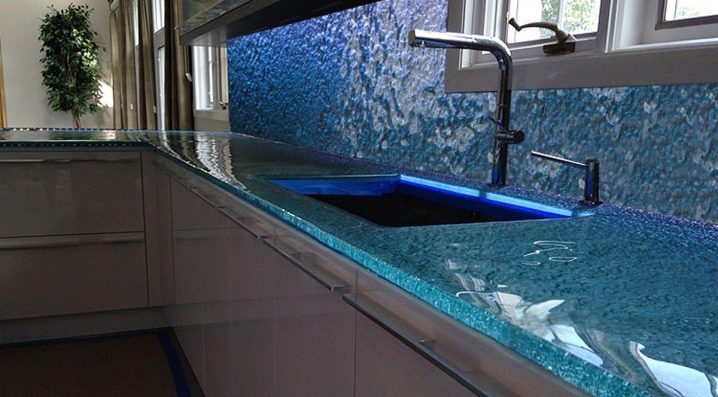
Dimensions (edit)
The dimensions of the countertops directly depend on the material from which they are made. The following are considered standard parameters:
- thickness - 40 mm;
- width - 600 mm.
Laminated particle boards and fibreboards are available in the following dimensions (in millimeters):
- 600x3050x38;
- 1200x2440x28;
- 1200x4200x28.
Stainless steel models are essentially prefabricated.
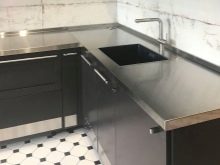
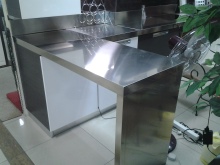

A thin sheet of metal is applied with a reliable adhesive to a moisture-resistant substrate. The thickness of the stainless steel can vary from 1 to 2 mm. The width can be any, and the length, as a rule, does not exceed 3 meters. If necessary, there is a joining of individual sheets. Rectangular wooden canvases have straight or rounded corners. Round, oval and any other shapes are made to order, as the wood is easy to process.
The main dimensions of solid wood countertops are as follows:
- width - from 600 to 800 mm;
- thickness - from 20 to 40 mm;
- length - from 1.0 to 3.0 m.
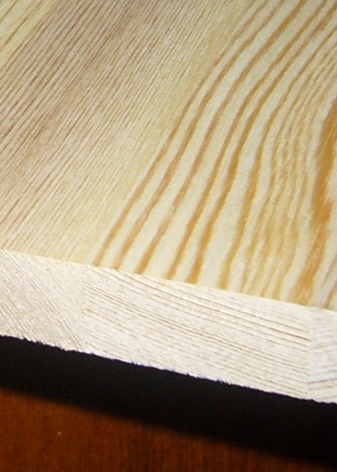
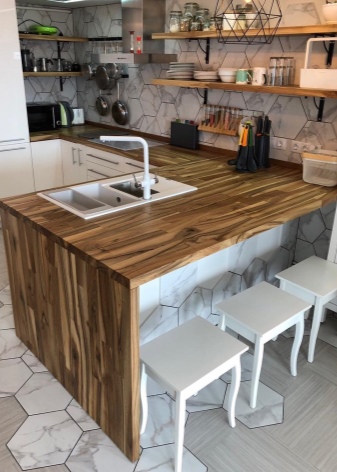
Not tied to certain sizes of acrylic products. The tabletop can be made in any shape and size. At the request of the customer, the tabletop is made thin (38 mm) or any other reasonable thickness, up to 120 mm. Standard specimens are usually 3 meters long, 40 mm thick and 0.8 m wide. Marble and granite countertops are made individually from 3x3 m sheets. The thickness of kitchen stoves is usually less than standard countertops and is 20-30 mm.
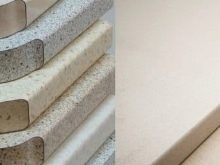
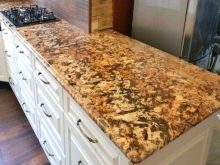

Color spectrum
There are various color options for kitchen surfaces. If natural materials, such as wood and stone, are limited in color by natural data, then artificial ones can be absolutely any. Usually, the tabletop is selected in color so that it either matches the colors of the cabinets, or, on the contrary, contrasts with them. From a practical point of view, the countertop should not be monochromatic. Any “pure” color, be it white, black or red, shows any kind of dirt.
Wood or stone with their uneven pattern can hide minor flaws.
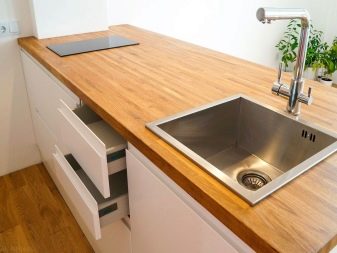
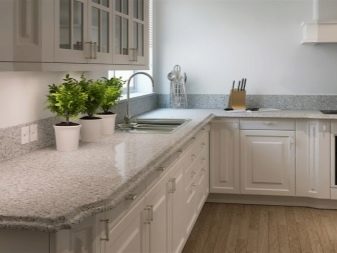
Tastes and concepts of beauty are different for everyone. Modern industry offers customers a huge selection of all kinds of colors, including designs that imitate natural materials. Everyone will find a suitable option.
Design features
Varieties of kitchen surfaces allow you to choose items for any style.
- For a classic kitchen, a wooden worktop is ideal. Natural wood will be successfully replaced by an inexpensive chipboard analogue. Nowadays, this material can look like leather and wood, stone and metal.
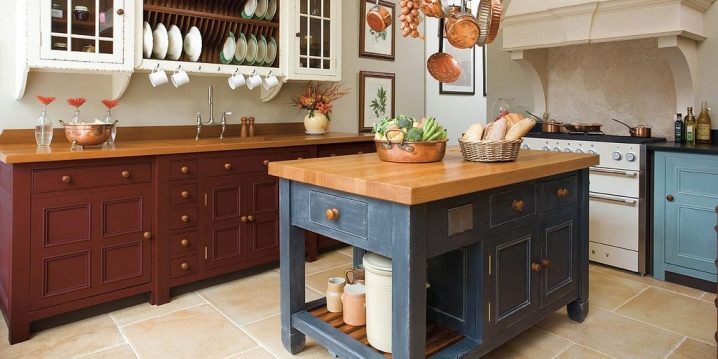
- Those who prefer minimalism should pay attention to the acrylic countertops of the correct geometric shape in modest colors: white, gray or beige.
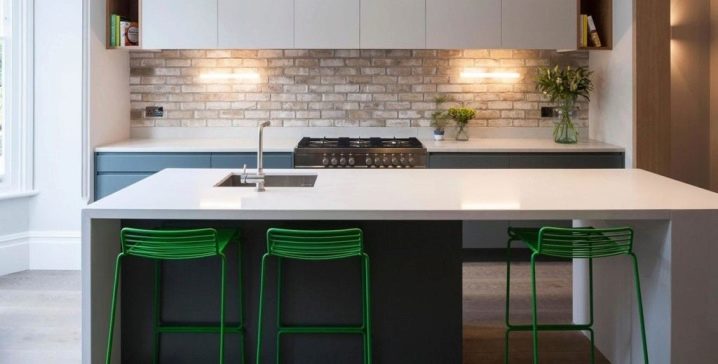
- Stainless steel fits perfectly into high-tech style.This commitment to innovation is underlined by the unusual worktop design with a seamless sink, debris holes and drip trays.

- A Provence style kitchen will be decorated with a kitchen surface made of thin light stone (or its imitation).
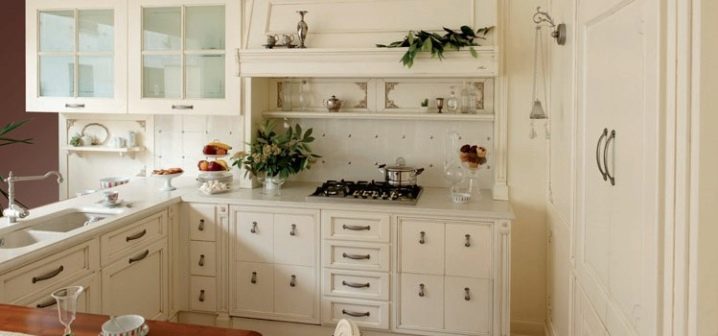
- Modern Art Nouveau is characterized by smoothness, absence of corners, new artificial materials, airiness. These qualities are met by metal and glass. Both materials should have a "pure" color without any decoration.

How to choose?
To the basic requirements for countertops, include the following:
- resistance to moisture and high temperatures;
- inertness to modern cleaning agents;
- food coloring resistance;
- strength and hardness;
- durability;
- pleasant appearance, well combined with the interior.
The mentioned characteristics are available for many materials, but the choice must be stopped on one thing.

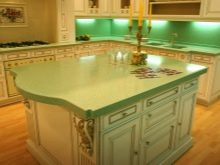
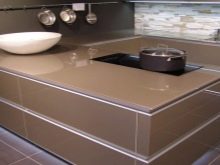
If you like changes, do not tolerate monotony, change the environment often, you should not go to extra expenses and buy expensive things. Choose the color of your laminate countertop. Better worktops will last much longer, but you will have to pay a lot. In addition, one should not forget that the costs will be required not only for the purchase of the countertop itself, but also for its installation. Often the cost of installation is quite high due to the installation of curbs or skirting boards, complex joining and other additional work.
Adapting stainless steel sinks to the kitchen is expensive. Installing wooden countertops is twice as expensive.
Also, don't forget points like:
- models made of stone and natural wood are suitable for spacious rooms;
- for small kitchens, light countertops should be chosen;
- stainless steel will harmoniously fit into any headset.
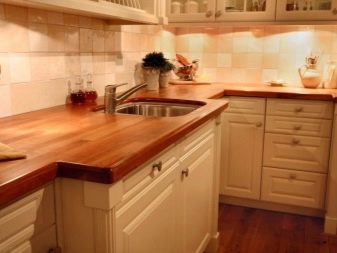

Reviews
Many people like wood countertops because they look rich, confirming the high status of the owners of the kitchen. “Warm” wood is pleasant to touch, unlike cold steel or “soulless” stone. Opponents of wood flooring see a lot of arguments against this material, namely:
- dents from blows;
- absorption of dyes;
- traces of exposure to sharp objects;
- difficulty in leaving.
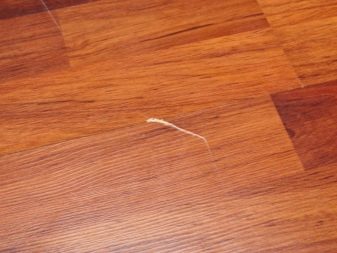
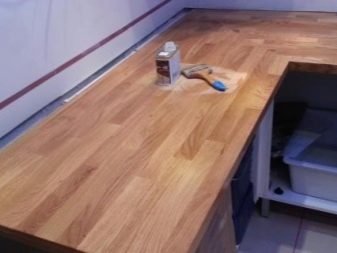
Young housewives prefer a modern mid-range environment, which is why acrylic stone countertops are found in new homes more and more often. Artificial material has taken root in kitchens due to its unique physical properties. Durable, solid, heat-resistant, moisture-proof - these are its characteristics. In addition, acrylic is able to imitate natural stones and wood. Marbled countertops give kitchens an elegant sophistication.
With a lot of advantages, acrylic also has disadvantages, however, there are very few of them.

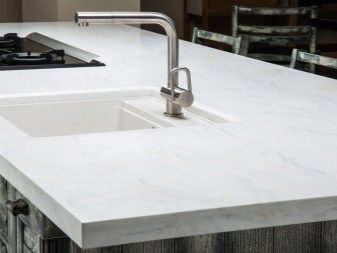
For example, do not remove stubborn dirt with products containing acids. Do not cut, chop, or beat off food directly on the countertop. Subject to the basic rules, the artificial stone will serve a long service.
How to make a kitchen countertop with your own hands, see the video below.













The comment was sent successfully.